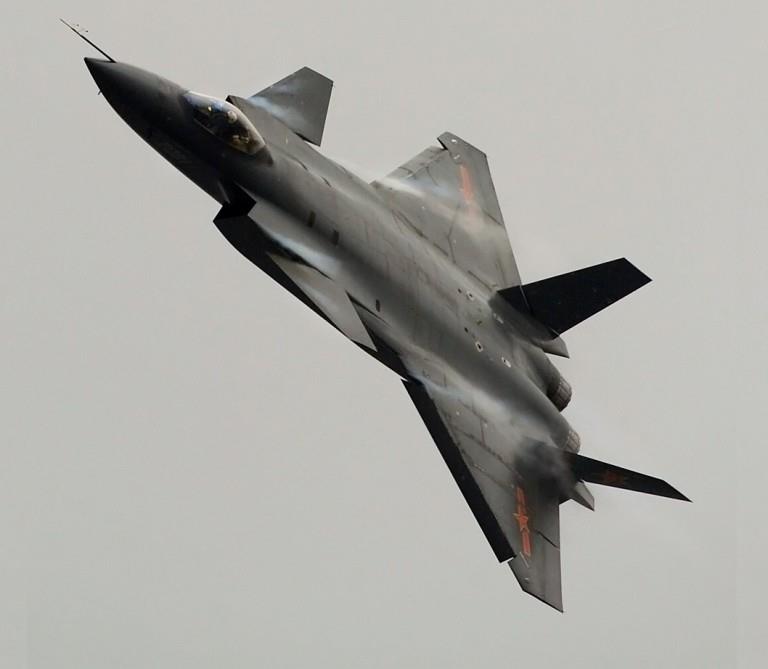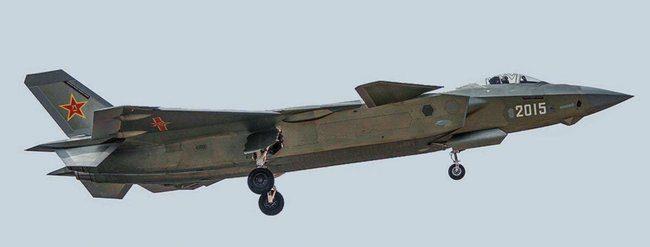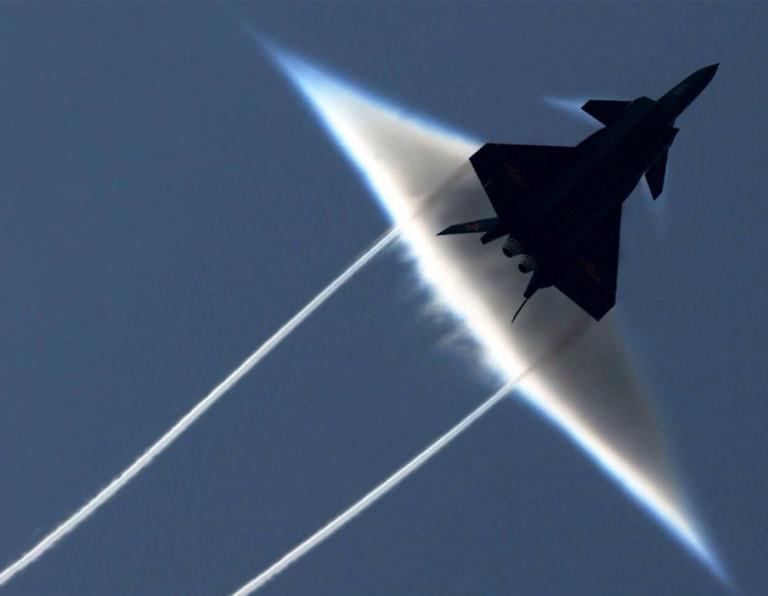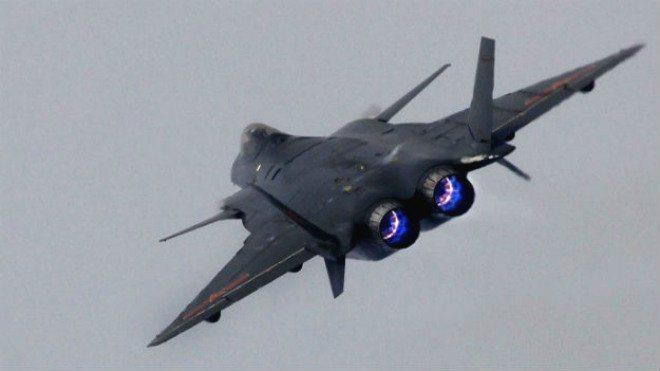S'sonic
Stealth
Menu
A free template by Lucknowwebs.com for WYSIWYG WebBuilder 8
Powered by Sispro1-S
Nigel G Wilcox
Paragon Of Space Publication
© Copyright Reserved - United Kingdom
Ideal Screen Composition 1024 x 768
SITEMAP
PSEUDO SCIENCE
SCIENCE RESEARCH
ABOUT
Desk
Supersonic
Stealth
Study
Menu
MAIN INDEX
Fastest Air Planes
Space
Transport
Menu
Chengdu J-20
General characteristics
Crew: one (pilot)
Length: 20.4 m (66.8 ft)
Wingspan: 13.5 m (44.2 ft)
Height: 4.45 m (14 ft 7 in)
Wing area: 78 m2 (840 sq ft)
Empty weight: 19,391 kg (42,750 lb)
Gross weight: 32,092 kg (70,750 lb)
Max takeoff weight: 36,288 kg (80,001 lb) upper estimate
Fuel capacity: 11,340 kg (25,000 lb) internally, or 19,340 kg (42,600 lb) with 4×2,400L external fuel tanks
Powerplant: 2 × Shenyang WS-10G (prototype) afterburning turbofans, 87 kN (19,500 lbf) thrust each dry, 140 kN (32,000 lbf) with afterburner
Maximum speed: 2,100 km/h (1,305 mph; 1,134 kn)
Wing loading: 410 kg/m2 (84 lb/sq ft)
Thrust/weight: 1.06 (prototype with interim engines)
Armament
PL-10 SRAAM
PL-12 Medium Range AAM
PL-21 Long Range AAM
PL-8 short range AAM
LS-6 Precision-guided bomb
Avionics
Type 1475 (KLJ-5) active electronically scanned array
EOTS-86 electro-optical targeting system
EORD-31 infrared search and track
Distributed aperture system
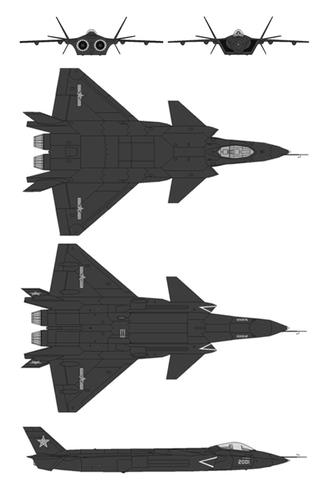
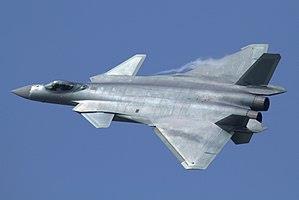
Role : Stealth air superiority fighter/multirole combat aircraft
National origin : People's Republic of China
Manufacturer : Chengdu Aircraft Industry Group
First flight : 11 January 2011
Introduction : 2017-2019 (planned)
Status : In development/flight testing
Primary user : People's Liberation Army Air Force
Number built : At least 2 confirmed (as of December 2012)
We’re talking about the Chinese Chengdu J-20. What some are calling “the Chinese F-22 Raptor.” Also known in some circles as the “Black Eagle.”
The Chengdu J-20 is a Chinese stealth jet. It’s a twin-engine, fifth-generation fighter that’s still in the prototype stage. It’s in development by Chengdu Aerospace Corporation, for use in the Chinese Air Force. Its first test flight was on January 11, 2011. Fully operational jets won’t be rolled out until 2018. Production is being stalled by some technical complications, though China is hopeful that it will extend its long-range striking power in the region.
The J-20 was built with a stealth profile in mind, but it already has some critics. Some people think that the J-20’s engine nozzles may compromise its stealth and allow it to be detected by radar. One of the prototypes had WS-10G engines that were constructed with jagged-edged tiles and nozzles, which helped ameliorate the negative stealth impacts.
What we currently know about the J-20 is that it is a single seat, twin engine, canard/delta design, stealthy fighter platform. There are just four copies being tested right now, with fully operational fighters predicted to be ready by 2018.
The Black Eagle has two Saturn AL-31 engines producing about 30,000 lbs of thrust each. With the possibility of more powerful Xian WS-15 engines currently in development, those are speculated to produce 44,000 lbs of thrust each. For reference, the F-22 has roughly 35,000 lbs of thrust per engine.
The J-20 is designed to execute ground attack missions even in hostile environments. The aircraft can reach higher altitudes with its delta wings in supersonic speeds.
It is larger than Sukhoi T-50 and Lockheed Martin F-22 Raptor. The front portion of the prototype looks similar to the F-22 Raptor and the rear section looks like a Sukhoi T-50.
The J-20 is designed to execute ground attack missions even in hostile environments. The aircraft can reach higher altitudes with its delta wings in supersonic speeds.
It is larger than Sukhoi T-50 and Lockheed Martin F-22 Raptor. The front portion of the prototype looks similar to the F-22 Raptor and the rear section looks like a Sukhoi T-50.
The J-20 will feature a blended fuselage with low radar cross section, low jet engine intakes, canard delta configuration, modern fly-by-wire (FBW) system, diverterless supersonic inlet (DSI), V-shaped tail and tail fins. The FBW system is equipped with a fire control system and engine management system. The active electronically scanned array (AESA) radar will scan the target information and transmit it to the fire control system.
The J-20 will feature a glass cockpit enclosed with a bubble shaped canopy. The cockpit will be fitted with two liquid crystal displays (LCD) and a head up display (HUD). The aircraft can be operated through traditional hands on throttle and stick (HOTAS) system.
The J-20 prototype is powered by Saturn 117S engines supplied by Russia. Each engine produces 32,000lb of thrust.
The production aircraft will be powered by two WS-10G thrust vectoring turbofan engines each generating 30,000lb of thrust. The engine is being designed and manufactured by Shenyang Liming Aircraft Engine Company. It will feature a single high-pressure turbine, dual low-pressure turbine, annular combustors and compressors.
The WS-10G will be fitted with thrust vector controlled (TVC) nozzles to decrease radar cross section (RCS) and infrared (IR) emissions. The diameter of the engine is 0.95m. The dry weight is 1,494kg.
The J-20 can climb at the rate of 304m/s. The maximum speed will be 2,100km/h. The range and service ceiling will be 3,400km and 18,000m respectively.
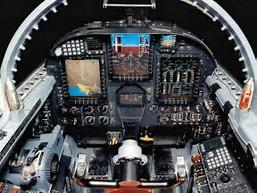
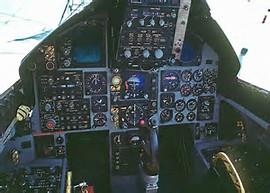
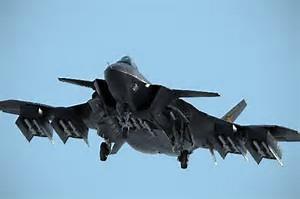
The Chengdu J-20 is a stealth, twinjet, fifth-generation fighter aircraft developed by China's Chengdu Aerospace Corporation for the People's Liberation Army Air Force. The J-20 made its maiden flight on 11 January 2011, but the plane was officially revealed on China International Aviation & Aerospace Exhibition in 2016. In March 2017, Chinese media claimed that the aircraft has entered initial operational capability phase with limited service within Air Force.
Maiden flight: 11 Jan 2011 Length: 66.60 ft Wingspan: 42.26 ft Manufacturer: Chengdu Aircraft Industry Group



